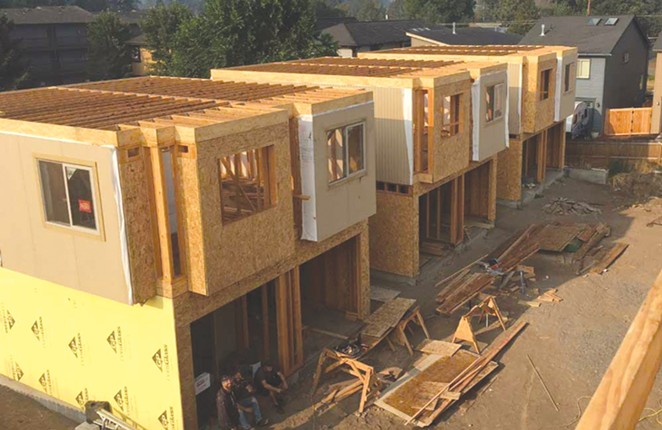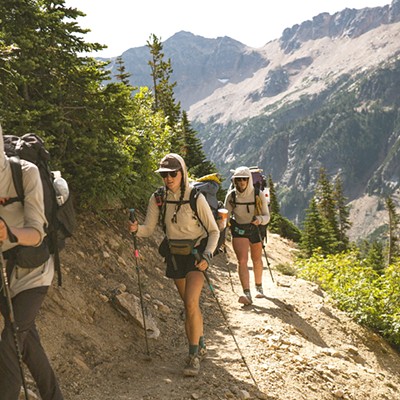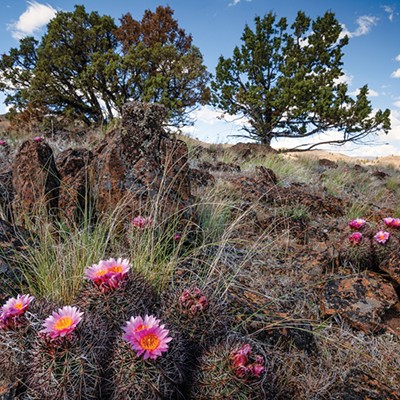Beautiful places tend to become popular destinations for tourists and outdoor recreationists. Visitors tell their friends and post pictures on social media, and businesses that serve those visitors — bars and restaurants, hotels, gear stores — proliferate. Soon, people with financial means start moving in, driving up housing prices and reducing available stock. Unable to handle the population influx, infrastructure begins to crumble, while local government finds itself unable to pay for needed repairs.

Whether in the red-rock canyons of Utah or the high country of the Rockies, this is a familiar cycle for communities near desirable natural areas in the Western U.S. In recent years, the pandemic-inspired movement of well-to-do remote workers has exacerbated this trend. A new report from Headwaters Economics, a Montana-based research nonprofit, dubs this pattern the "amenity trap," meaning "the paradox of a place with natural attractions that make it a great place to live but also threaten it with being 'loved to death.'"
Using local data and specific case studies, the report breaks down the amenity trap into a pressing few categories, including housing, infrastructure and natural disasters. It also discusses policies that have successfully addressed these problems in some of the West's most coveted destinations.
"What we wanted to unpack here is why these places are unique, and why they have unique challenges, and why they need solutions that are really tailored," said Megan Lawson, one of the study authors.
Housing availability and affordability are perhaps the most pressing issues that face tourism- and recreation-dependent towns, sometimes called gateway communities. As an area becomes popular, housing prices tend to rise, and demand soon outstrips supply. Vacation homeowners and investors in short-term rentals like Airbnb and VRBO compound this problem. In Sedona, Arizona, for example, short-term rentals make up 17% of all housing.
These forces are particularly harmful to low-income renters and seasonal employees — the locals who build the houses, guide the river trips, serve the drinks and run the chairlifts. These are people who survive on hourly wages, unlike the wealthier newcomers who move in and drive up housing prices. A separate Headwaters study on one Colorado ski destination showed that amenities communities attract people whose income derives from investments. Meanwhile, local wages stagnate, and low-income workers are forced into substandard living conditions or out of their homes entirely. The new report noted that "a $100 increase in median rent was associated with a 9% increase in homelessness."
According to the study, amenities communities "experience planning and development problems associated with more urbanized areas." But rural tourist destinations also face distinct challenges — specifically, an acute lack of buildable land, since these towns tend to be surrounded by public land, and a limited local labor supply, due to the housing shortage. Many of the construction workers who build houses in Colorado's iconic ski town of Telluride, for example, live in Montrose, a three-hour daily commute.
Across the region, towns are trying various solutions to these persistent problems. Durango, Colorado, for instance, has instituted caps on short-term rentals, while ski towns like Truckee, California, have programs that pay property owners to rent to local workers. The study also describes a housing project in Norwood, Colorado, where income-restricted modular homes are set aside for school district employees. While the median listing price of homes in the county exceeded $2 million in 2022, the project was able to keep housing costs between $225,000 and $426,400.
Some communities have tried to slow growth by, for example, limiting the number of available building permits or water hookups. The Headwaters report advises against this, noting that such strategies tend to backfire, driving up costs for those who can least afford it. Instead, the researchers recommend policies that increase density and prioritize affordable housing.
Beyond housing, towns caught in the amenity trap face vastly overstretched public services and infrastructure. Projects like expanding wastewater treatment capacity or repairing roads are often paid for by taxes on permanent residents, even though it's the visitors who are mainly wearing down the infrastructure. The researchers point to Bozeman, Montana, a booming area that hosts millions of overnight visitors each year. A 3% sales tax on nonessential goods there, including lodging, would raise $30 million each year in revenue and shift some of the cost onto tourists, easing the divide between funding needs and tax burden (Bozeman cannot currently do this under Montana law). Grand County, Utah — home of Moab — is already using lodging taxes to offset tourism impacts.
Over-reliance on one industry is a key part of the "amenity trap." When an area depends on visitors, natural disasters like floods and wildfires — exacerbated by climate change — can bring the local economy to a standstill. After last summer's Yellowstone River floods closed the national park, Gardiner, Montana, saw its tax revenue from hotels and lodging fall by 92%. The study recommends that local leaders plan for the worst by increasing water storage, avoiding new construction in areas at high risk for fire, and expanding local emergency response capacity. It also urges communities to diversify local sources of revenue — something that is much easier said than done. "It's like going into an oil and gas town during a boom and saying, 'Stop being so dependent on oil,'" Lawson said. Still, she singled out Moab and Bend, Oregon, as places that are "trying to take some of the windfall that comes from the booming industry" and invest it in small business incubators or loan programs for property and equipment.
Tourism and recreation are bringing much-needed jobs and revenue to rural communities across the West. But the problems that come with this sort of economy cannot be ignored. Without targeted policies to address these impacts, the pitfalls of the amenity trap are liable to overwhelmingly impact local residents and the precariously employed hourly workforce. "We're not going to solve the housing problem" in these areas, Lawson said, "if we don't also talk about fiscal policy, if we don't also talk about natural disasters, and the unique vulnerability these places are facing."
—Originally published in High Country News May 23.




















